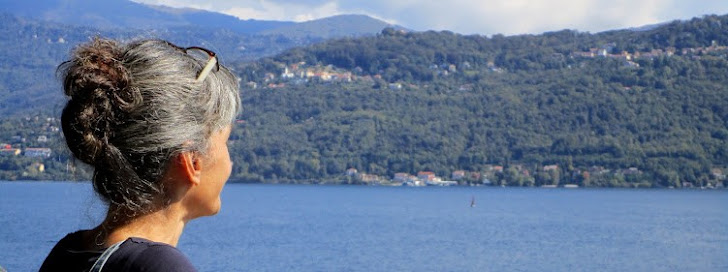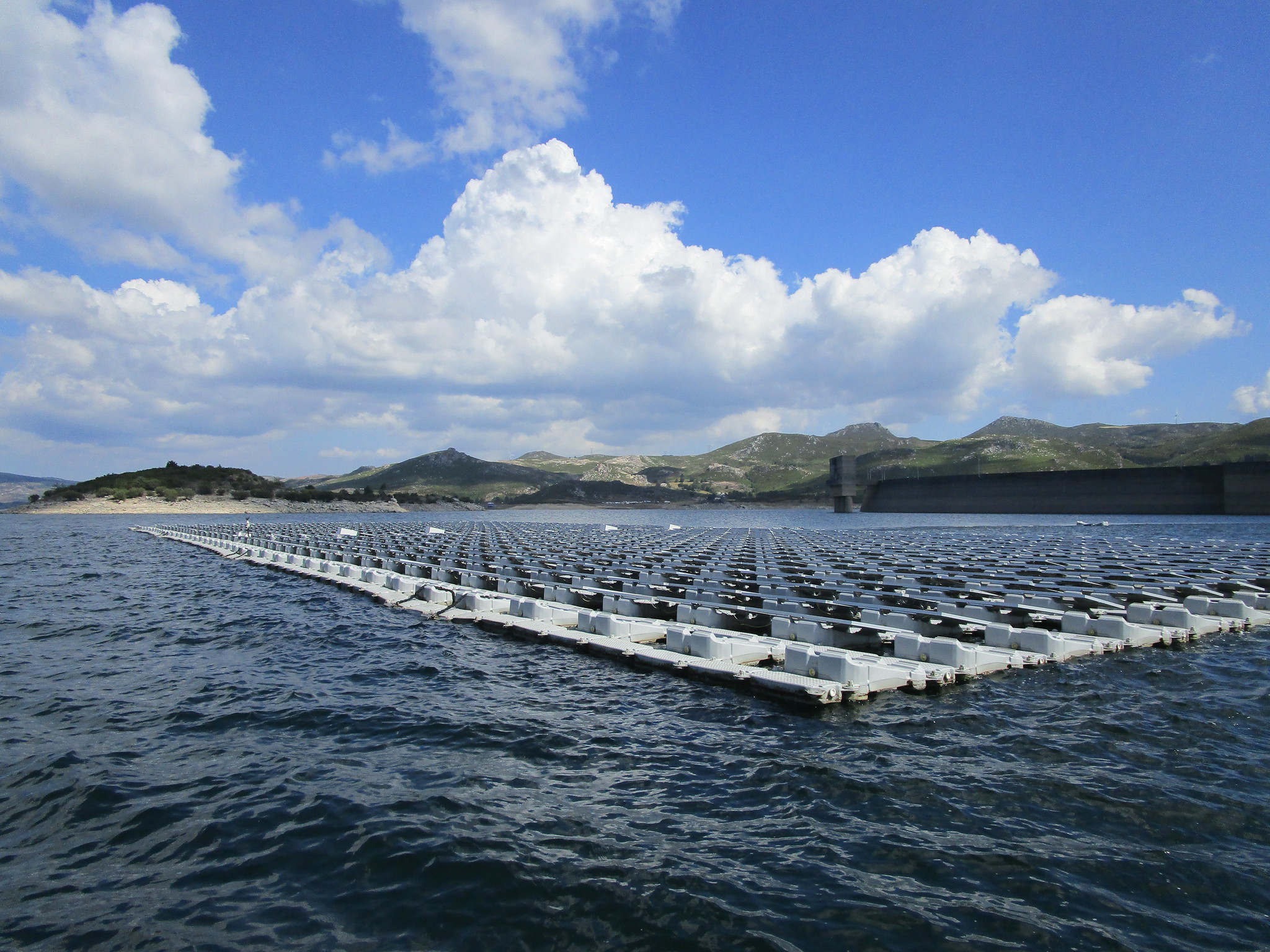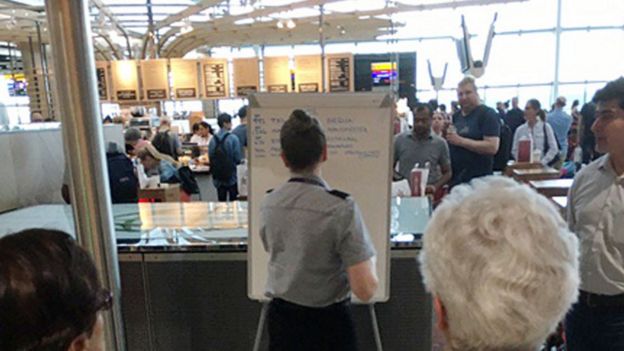“It is a matter of broadening the definitions of class by pursuing an exhaustive search for everything that makes subsistence possible. As a Terrestrial, what do you care most about? With whom can you live? Who depends on you for subsistence? Against whom are you going to have to fight? How can the importance of all these agents be ranked?” Bruno Latour (2020). Down to Earth: Politics in the New Climatic Regime. Image by Monica Pinheiro, license CC BY-NC-SA (CC).

"More than conversation at the interface, it is creative assemblages like these that explore and elaborate the particular dynamic capacities that digital media afford and the ways that through them humans and machines can perform interesting new effects (...) in uniquely particular ways." Lucy Suchman (2009). Human-machine reconfigurations: plans and situated actions.
Showing posts with label infrastructures. Show all posts
Showing posts with label infrastructures. Show all posts
Apr 29, 2020
Jul 18, 2019
July

"Infrastructure is both relational and ecological—it means different things to different groups and it is part of the balance of action, tools, and the built environment, inseparable from them. (...) to understand the interplay of online and offline behavior (...) include studying the design of infrastructure, understanding the paradoxes of infrastructure as both transparent and opaque, including invisible work in the ecological analysis, and pinpointing the epistemological status of indicators." Susan Leigh Star, 1999. The Ethnography of Infrastructure. American Behavioral Scientists, 43(3), pp 377-391. Image by Monica Pinheiro, license CC BY-NC-SA (CC)
Dec 19, 2018
(re)encountering spaces
"(...) new technologies inherently cause people to reencounter spaces. This is not a question of mediation, but rather one of simultaneous layering. (...) The spaces into which new technologies are deployed are not stable, not uniform, and not given." P. Dourish & G. Bell (2007). The infrastructure of experience and the experience of infrastructure: meaning and structure in everyday encounters with space. Environment and Planning B: Planning and Design, vol. 34(3), pp.414-430. Image by Monica Pinheiro, license CC BY-NC-SA (CC)
by
Monica Pinheiro
0
comments
 Labels:
december,
infrastructures,
layering,
space,
technology,
unpredictable
Labels:
december,
infrastructures,
layering,
space,
technology,
unpredictable
Jan 11, 2018
Stillness in a mobile world
Stillness:"an ethical choice between stillness as first aid for an overactive world, and stillness as a real slowing down". Bissell, David, and Gillian Fuller (2013). Stillness in a mobile world. London New York: Routledge. Image by Monica Pinheiro, license CC BY-NC-SA (CC)
by
Monica Pinheiro
0
comments
 Labels:
access,
boundaries,
concepts,
enforcement,
geography,
infrastructures,
learning,
logistics,
migrants,
mobility,
platforms,
policies,
Stillness
Labels:
access,
boundaries,
concepts,
enforcement,
geography,
infrastructures,
learning,
logistics,
migrants,
mobility,
platforms,
policies,
Stillness
May 28, 2017
Aug 15, 2016
Visualizing energy data
Chart from USA energy data ( http://energyliteracy.com ):
 |
| onsite interactive map shows energy wasted in different sectors |
"By clicking through the chart, you can see exactly how much energy is used for every activity. (...) Almost 1% is used just to pump natural gas around pipelines; 2% goes to making cardboard and other paper products. Around 16% is used to grow, distribute, and cook food. Looking at the total picture helps make the point that some of the ways that we think about energy aren't quite right. Refining petroleum uses about 6% of total energy in the country, but isn't considered when we think about fuel economy in cars. (...) Mining oil and gas uses even more energy." (in link)
by
Monica Pinheiro
0
comments
 Labels:
chart,
energy,
infrastructures,
USA,
visualizing information,
wast
Labels:
chart,
energy,
infrastructures,
USA,
visualizing information,
wast
Aug 25, 2015
ICT2015 conference
ICT 2015 - Innovate, Connect, Transform, on 20-22 October 2015 in Lisbon, Portugal, parallel activities:
- A policy conference presenting the new Commission's policies and initiatives on Research & Innovation in ICT (Horizon 2020 Programme);
- An interactive exhibition showcasing the best results and impact of most recent EU ICT Research & Innovation;
- Many networking opportunities to enhance quality partnerships, help participants find partners, connect Research and Innovation and trigger collaboration;
- Funding opportunities: ICT 2015 will also be the place to gather information on the 2016-17 Work Programme of Horizon 2020;
- The Startup Europe Forum, offering a set of activities profiling EU policy actions for startups and SMEs, innovators, private and public investors.
by
Monica Pinheiro
0
comments
 Labels:
concept paper,
conference,
eInfrastructures,
eScience,
europe,
events,
ICT,
infrastructures,
innovation,
open science,
policies
Labels:
concept paper,
conference,
eInfrastructures,
eScience,
europe,
events,
ICT,
infrastructures,
innovation,
open science,
policies
Nov 21, 2011
infrastructure of experience
"By 'the experience of infrastructure', we point to the ways in which infrastructure, rather than being hidden from view, becomes visible through our increasing dependence upon it for the practice of everyday life. By 'the infrastructure of experience', we want to draw attention to the ways in which, in turn, the embedding of a range of infrastructures into everyday space shapes our experience of that space and provides a framework through which our encounters with space take on meaning. (...) The first, and most fundamental, conclusion is that space is organized not just physically but culturally; cultural understandings provide a frame for encountering space as meaningful and coherent, and for relating it to human activities. (...) The second conclusion is that architecture is all about boundaries and transitions, and their intersection with human and social practice. (...) The third conclusion is that new technologies inherently cause people to reencounter spaces. This is not a question of mediation, but rather one of simultaneous layering. (...) Finally, there is already a complex interaction between space, infrastructure, culture, and experience. The spaces into which new technologies are deployed are not stable, not uniform, and not given." P. Dourish & G. Bell (2007). The infrastructure of experience and the experience of infrastructure: meaning and structure in everyday encounters with space. Environment and Planning B: Planning and Design, vol. 34(3), pp.414-430.
Mar 27, 2009
«Infrastructures» definition by EU Commission
Research Infrastructures and the Regional Dimension of the ERA, MEMO/09/134, Brussels, 25 March 2009:
Importance of Research Infrastructures for Europe
- [definition:] “Research Infrastructure” are facilities, resources and related services that are used by the scientific community to conduct top-level research in their respective fields. This definition covers: major scientific equipment or sets of instruments; knowledge based-resources such as collections, archives or structured scientific information; enabling ICT-based infrastructures such as Grid, computing, software and communications. Such Research Infrastructures may be “single-sited” or “distributed” (a network of resources).
- [examples of what constitutes infrastructures:] Examples of Research Infrastructures range from synchrotrons, telescopes, high power lasers, or high performance computers, to research vessels, bio-banks, brain imaging facilities, clean rooms, data archives, etc.
- [contributions of infrastructures to EU Research:] High quality, internationally open Research Infrastructures are necessary tools to carry out top quality research. They contribute to extending the frontiers of knowledge, supporting industrial innovation, exchanging and transmitting knowledge, and training the next generation of top researchers. Therefore, Research Infrastructures are at the core of the “knowledge triangle”, combining Research, Education and Innovation.
Apr 17, 2008
Infrastructure for interoperability
Global Research Library 2020 - Goals & Objectives:
"Either as individual institutions or a part of consortia, we are all working on improving existing (local) infrastructures and establishing new systems, but moving forward we need to be absolutely certain that these effort are all tightly-linked and easily interoperable (e.g. leveraging community protocols, suites of standards, etc). Infrastructure is used here to include people with appropriate skill sets, systems, standards and protocol suites, and even policy frameworks."
May 18, 2007
Thoughts on Mobility
Falamos em objectos de mobilidade, mas quem move os objectos somos nós, as pessoas. Estes objectos de mobilidade (telefones móveis, computadores móveis, etc.) não são de facto móveis. A mobilidade de que se falava em séculos anteriores, correspondia a objectos de mobilidade, como os transportes (barcos, combóios, carros, aviões, foguetões, etc). Nesses objectos as pessoas eram transportadas, deslocadas, mobilizadas para outros locais. Nos actuais objectos que qualificamos de «móveis», somos nós que os deslocamos para lhes dar a mobilidade.
Para que os nossos telefones nos possam acompanhar e nós os possamos adjectivar de «móveis», outras infraestruturas (bem) fixas, têm que existir para nos permitir «dar mobilidade» aos nossos objectos móveis: antenas, amplificadores de sinal,....
É tão óbvio, que se torna ausente do utilizador comum. O enfoque na mobilidade humana , torna-se o ponto central do olhar. Nós somos a mobilidade.
This thoughts came stumbling after reading in a different kind of journal. One that makes use of multimedia in such a different way to present a line of thought, that my mind was receiving so many stimulus that it was hard to process all the signals i was being bombarded with:
Para que os nossos telefones nos possam acompanhar e nós os possamos adjectivar de «móveis», outras infraestruturas (bem) fixas, têm que existir para nos permitir «dar mobilidade» aos nossos objectos móveis: antenas, amplificadores de sinal,....
É tão óbvio, que se torna ausente do utilizador comum. O enfoque na mobilidade humana , torna-se o ponto central do olhar. Nós somos a mobilidade.
This thoughts came stumbling after reading in a different kind of journal. One that makes use of multimedia in such a different way to present a line of thought, that my mind was receiving so many stimulus that it was hard to process all the signals i was being bombarded with:
- Vectors Journal of Culture and Technology in a Dynamic Vernacular. See also pdf with static information about WiFi.Bedouin, by Julian Bleecker. To luch the project, look for the «Launch Project» on the right side of this page.
Mar 7, 2007
Sociedade em Rede
Castells, Manuel (2005). A Sociedade em Rede: do Conhecimento à Política. Gustavo Cardoso & Manuel Castells (Org.) A Sociedade em Rede: Do Conhecimento à Acção Política. Lisboa: Imprensa Nacional - Casa da Moeda, pp. 17-30:
"Frequentemente, a sociedade emergente tem sido caracterizada como sociedade de informação ou sociedade do conhecimento. Eu não concordo com esta terminologia. Não porque conhecimento e informação não sejam centrais na nossa sociedade. Mas porque eles sempre o foram, em todas as sociedades historicamente conhecidas. O que é novo é o facto de serem de base microelectrónica, através de redes tecnológicas que fornecem novas capacidades a uma velha forma de organização social: as redes."(p.19)
"[As redes] podem, ao mesmo tempo, ser flexíveis e adaptáveis graças à sua capacidade de descentralizar a sua performance ao longo de uma rede de componentes autónomos, enquanto se mantêm capazes de coordenar toda esta actividade descentralizada com a possibilidade de partilhar a tomada de decisões. As redes de comunicação digital são a coluna vertebral da sociedade em rede, tal como as redes de potência (ou redes energéticas) eram as infra-estruturas sobre as quais a sociedade industrial foi construída, como demonstrou o historiador Thomas Hughes." (p.18)
Wishlist: Hughes, T. (2005). Human-Built World: How to Think about Technology and Culture. University Of Chicago Press.
PS [18/May/2007] - I already have Human-Built World: How to Think about Technology and Culture :-)
PS [18/May/2007] - I already have Human-Built World: How to Think about Technology and Culture :-)
Subscribe to:
Comments (Atom)




